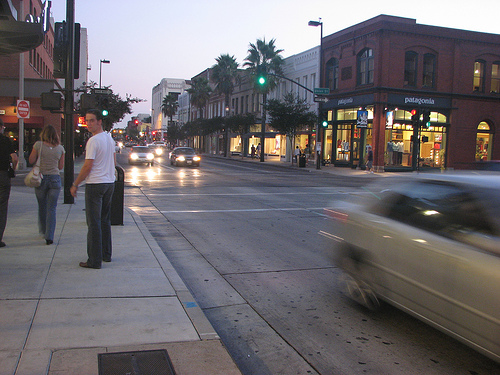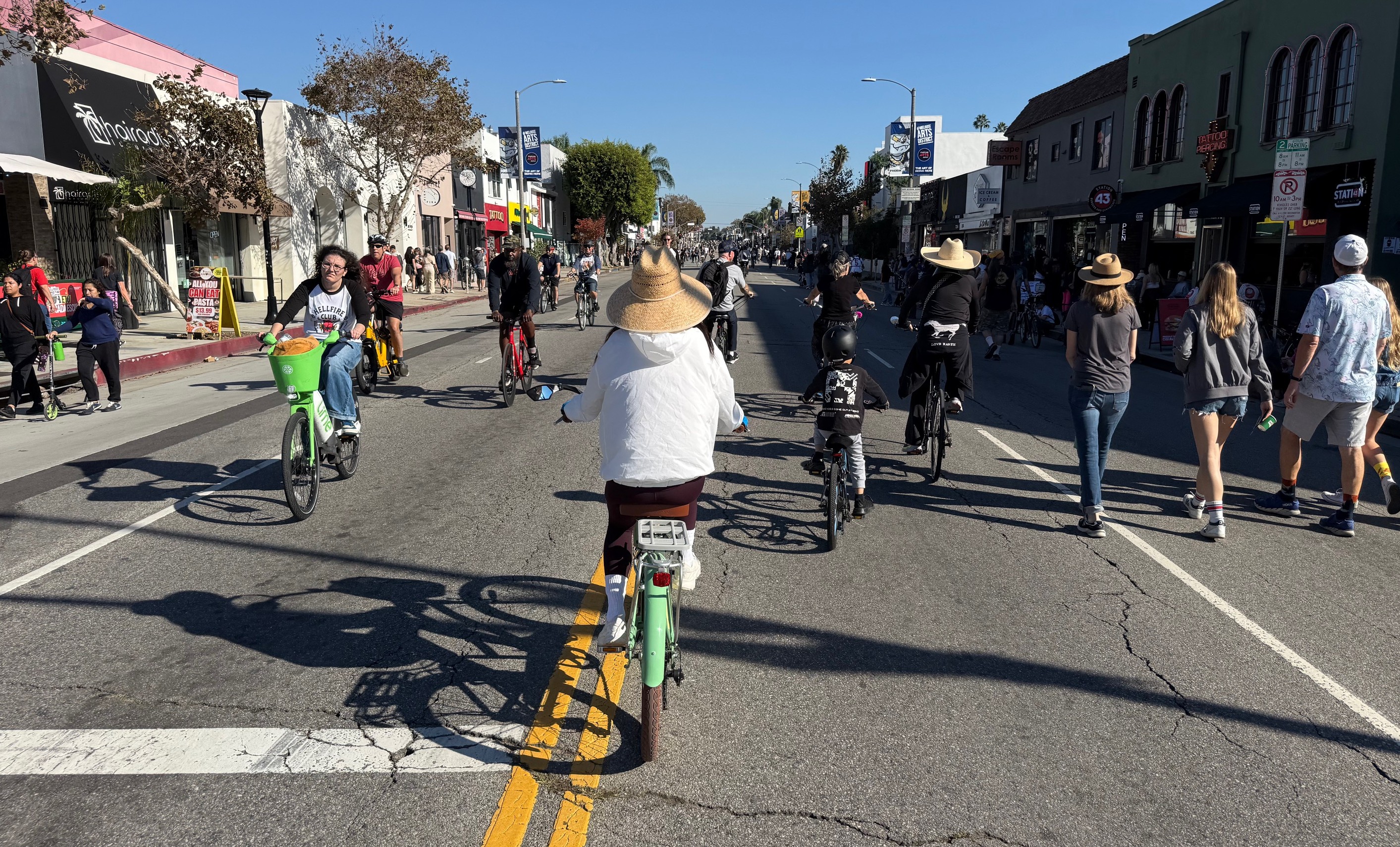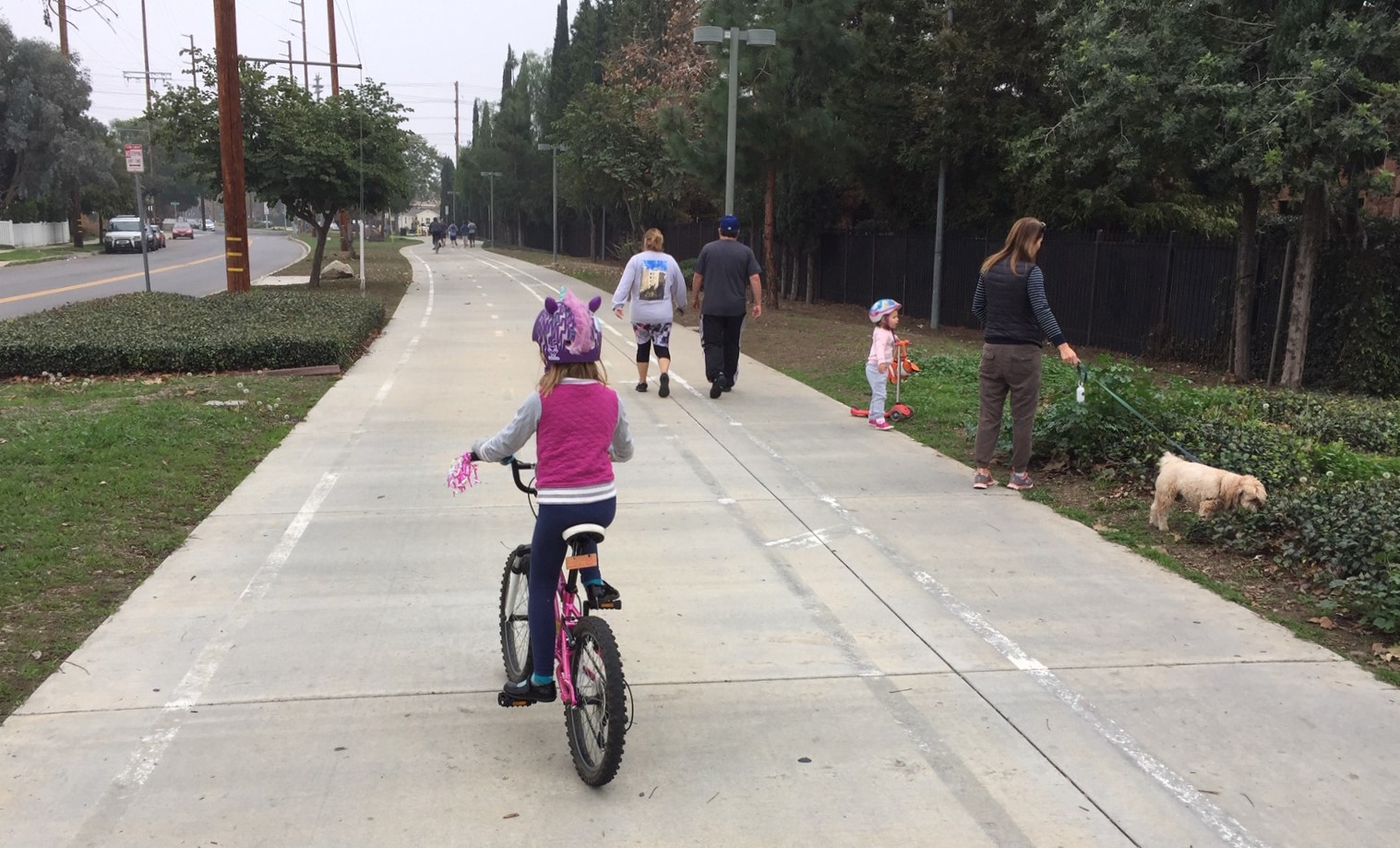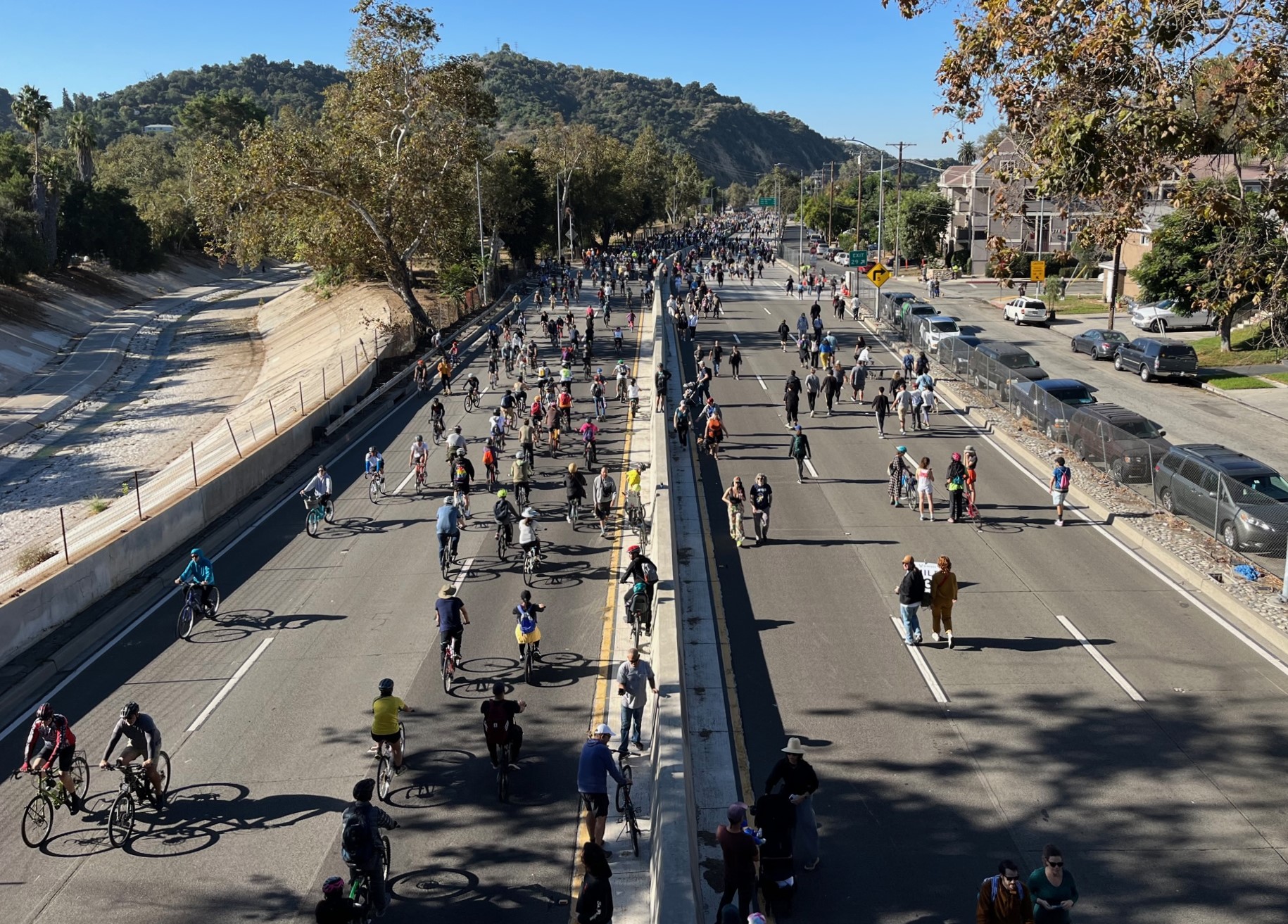
Editor's Note: The LA Times and the Pasadena Star News may have already written about last weekend's Pasadena Walkabout, but only LA Streetsblog has a report on the walkabout written by Deborah Murphy, the urban planner and organizer of the event.
Although the image of Pasadena provokes thoughts of majestic, tree-lined, and walkable streets in residential neighborhoods. The harsher reality out on the major boulevards is very different.
With more than 120 people walking more than 30 miles of streets in Downtown Pasadena on Saturday, March 1st, we learned the good, the bad and the ugly of the streets of old Pasadena, the Civic Center, the Playhouse District and South Lake Avenue Shopping District.
Every person at the walkabout cares deeply about Pasadena and about its walkability. They all want to be able to walk and not have to drive to the store for a loaf of bread, to a restaurant for dinner, to their place of work if it is close by, to lunch from their job site, and to the shoe repair because they have worn the soles of the shoes bare from walking everywhere. They want to be able to have their children walk safely to school and soccer games and for the grandparents to be able to get around with limited driving privileges. They would love to take the Gold Line if only they could get across Lake Avenue, Corson Street and Maple Street. They are tired of traffic congestion, air pollution, disenfranchised communities and having to drive their kids everywhere. They want to shop close to home and to leave their car at home whenever they can.
This is what we discovered:
1. The particularly bad were places that we all knew were bad. With so many people examining it for themselves, everyone who walked on Lake Avenue to the Metro Gold Line Station experienced the hell that is the center divider of the 210 Freeway. With vehicles zooming to the on ramps and from the off ramps, transit riders barely have a fighting chance to get to and from the station. At this location, transit riders and other pedestrians should be welcomed and the area should be designed to encourage people to take the Gold Line instead of being threatened by drivers rushing to their job or on a Saturday errand. The crush of vehicle noise doesn't even allow you to talk to the person next to you.
Southern California has invested billions of dollars in our transit system, yet has not done a good enough job of creating a safe, comfortable and pleasant environment on our city streets for people to get to the stations or signage for people to orient themselves when they arrive there and find their way to their destination.
2. The road that was most loved and most hated at the same time was Green Street. Team Leader Wayne Hunt said the walking experience along Green Street included "the sublime to the ridiculous."
The love was for the majestic Ficus trees that shade and add distinction to the street, but it was also those same trees that people hated for their enormous tree roots which uplift the sidewalk and make walking dangerous. Walking parts of Green Street provides some of the most pleasant walking experiences in downtown Pasadena. Other places along the same street near the convention center and the back side of Paseo Colorado create hostile pedestrian environments, that says where is your car to those brave enough to approach on foot. The fact that this is a one-way street allows cars to wiz by and for drivers to think that they are the king of the road without even noticing the pedestrians walking along the street, let alone crossing the street.
3. Walnut Street is another one-way east-west street but does not have the street trees, adequate width sidewalks and the buffer of on-street parking of Green Street. The sidewalk up-lifting tree roots of the Ficus trees on Green Street might be welcome relief on a hot summer day on Walnut Street. Many groups considered the street hostile and brutal. Team Leader Gloria Ohland even called it "loud, scary and fast."
4. So what makes Downtown Pasadena walkable now? - For the walkers and Pasadenans-in-the-know, the alley walkways in Old Pasadena and the Playhouse District provide a walker's paradise separated from automobile traffic. However when walkers come to a formal street, linkages across the street to the next alley walkway rarely exist and walkers are forced to walk to the nearest intersection to safely and legally cross the street.
The Civic Center also provides some of the best streets in Downtown Pasadena that are tree shaded with wide sidewalks and landscaped parkways. Fine examples include Holly Street from the Memorial Park Gold Line Station to City Hall, Garfield Avenue from Colorado Blvd. to the Central Library, Euclid Avenue between City Hall and All Saint's Church. Western Asset Plaza and other courtyard pedestrian passages were found to be great walking assets, but do not invite the public to use them nor to take advantage of their beautifully landscaped setting.
5. The surprises - Many of the north-south avenues including Oakland Avenue and Mentor Avenue which were found to be of good scale and architectural character with lots of potential for an enhanced pedestrian experience. Mentor Avenue connects cultural destinations like the Ice House and the Boston Court Theatre. Mentor Avenue runs behind the South Lake Avenue Shopping District and Shopper's Lane.
People shop, cars don't. Great streets across the world handle cars yet create wonderful and memorable places for the people who live, work and play in them. These streets are designed for people, not for cars, because inside those cars are people.






